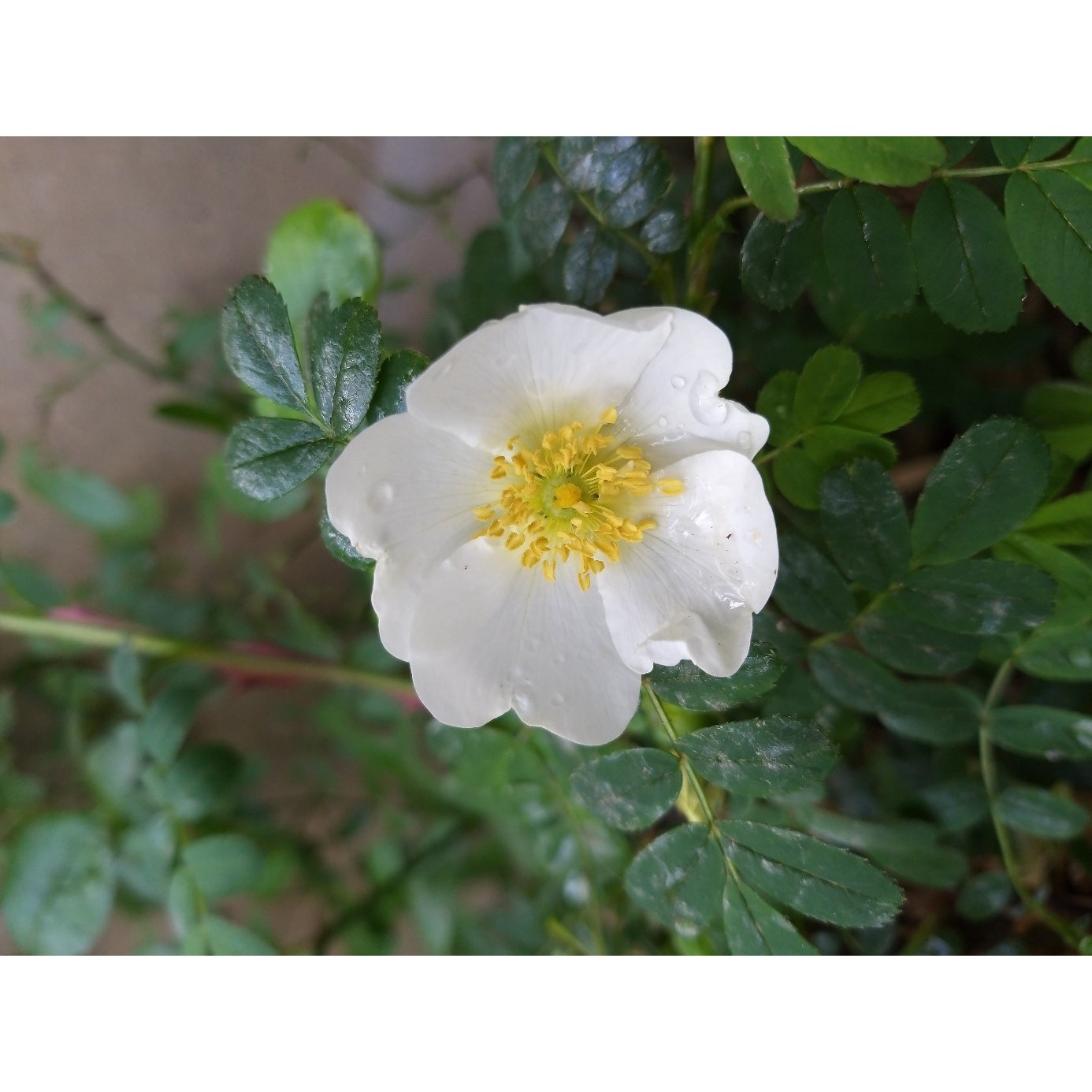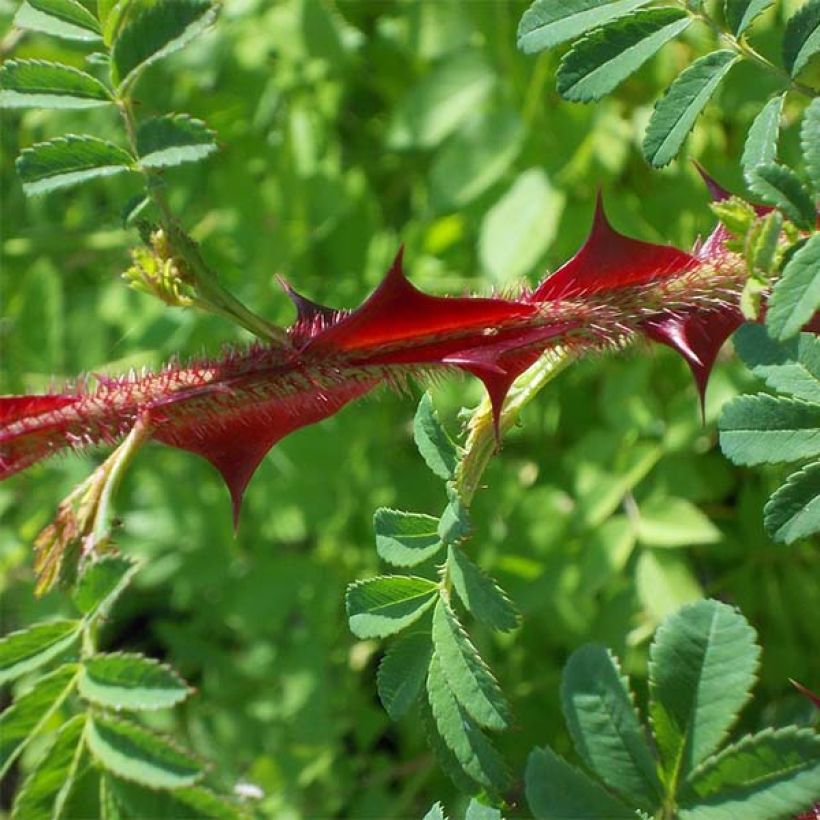

Rosa omeiensis Pteracantha


Rosa omeiensis Pteracantha


Rosa omeiensis Pteracantha


Rosa omeiensis Pteracantha
View more pictures
Hide images

Thierry P.

No text to translate.
Thierry P. • 84 FR

Thierry P.

Flowering in May - image 12
Thierry P. • 84 FR

Thierry P.

No text to translate.
Thierry P. • 84 FR

Thierry P.

Thierry P. • 84 FR

Thierry P.

May flowering - image 6
Thierry P. • 84 FR

Thierry P.

No text to translate.
Thierry P. • 84 FR
Rosa omeiensis Pteracantha
Rosa omeiensis Pteracantha
Winged thorn Rose
two well-wrapped rose bushes: one magnificent, the other more feeble and with a dead branch I am now awaiting spring
françoise, 20/10/2022
Special offer!
Receive a €20 voucher for any order over €90 (excluding delivery costs, credit notes, and plastic-free options)!
1- Add your favorite plants to your cart.
2- Once you have reached €90, confirm your order (you can even choose the delivery date!).
3- As soon as your order is shipped, you will receive an email containing your voucher code, valid for 3 months (90 days).
Your voucher is unique and can only be used once, for any order with a minimum value of €20, excluding delivery costs.
Can be combined with other current offers, non-divisible and non-refundable.
Home or relay delivery (depending on size and destination)
Schedule delivery date,
and select date in basket
We guarantee the quality of our plants for a full growing cycle, and will replace at our expense any plant that fails to recover under normal climatic and planting conditions.
Description
The Rosa omeiensis pteracantha, also known as Rosa sericea pteracantha or the silky rose, is a unique botanical china rose. It is cultivated for the beauty of its large red and translucent thorns, which are very ornamental on young shoots. The shrub is bushy and dense and produces small white wild rose flowers in early summer that are light as butterflies, fluttering on dark green, fern-like foliage. This plant is very hardy and can tolerate drought well. It prefers sunny exposures and is a beautiful curiosity to introduce in a large garden or a country hedge. Its stems are also widely used in floral art.
The Rosa sericea subsp. omeiensis f. pteracantha is a wild rose originally from the high mountains of central and southwest China. It usually grows between 2000 and 4000 metres (6561 and 13123 feet) above sea level. The rose was first discovered by Abbe Delavay in 1884 in a coniferous forest and was later introduced in France around 1890. The rose is known for its strongly cut foliage with 5 to 13 tiny leaflets with finely jagged edges, which is why it is classified in the same family as the burnet-leaved rose.
The Rosa sericea is a tall and vigorous bush or shrub that grows up to 2.5 metres (8 feet 2 inches) and a little less in width. Its young branches are grey-green tinged with red, covered with a sheath of fine bristles and armed with numerous triangular thorns, which are very wide at the base (up to 2 cm), crest-shaped, and have a red colour that is crossed by sunlight. They become opaque on older stems.
The flowering of Rosa sericea occurs in June. It is unique because the white wild roses of this rose have only four petals instead of the usual five. They measure about 2.5 to 3.5 cm (1.4 in) in diameter. After flowering, the plant produces yellow-orange hips that turn red when ripe, covered in persistent spiny sepals. Pruning the plant during spring will help in the production of multiple young shoots.
The love for botanical roses may not be commonplace. Still, it is entirely justified, especially in poor soils or challenging weather conditions. These roses are not only the ancestors of modern roses but are also generally more robust and dependable. The silky rose is an extraordinary and charming rose that is easy to care for and ideal for a curious garden. It can be used as a country or defensive hedge, as it forms a thorny mass that is difficult to cross. Its placement should be carefully chosen so that the light can reveal the magnificence of its thorns. It looks stunning in front of a mass of tall asters (Aster laevis, Aster turbinellus, Kalimeris mongolica, Solidaster), in a wild garden, or surrounded by warm hues such as the autumn foliage of cotinus and deciduous euonymus. In spring, the fragrance and roundness of lilacs, as well as the purity of mock oranges, will pair beautifully with its new growth, while in summer, buddleias and old perpetual roses will take over. This is a very hardy, low-maintenance, easy, and drought-resistant shrub once it is well-established.
Report an error about the product description
Rosa omeiensis Pteracantha in pictures




Plant habit
Flowering
Foliage
Botanical data
Rosa
omeiensis
Pteracantha
Rosaceae
Winged thorn Rose
Rosa sericea f. pteracantha, Rosa omeiensis f. pteracantha, Rosa sericea subsp. omeiensis f. pteracantha, Rosa sericea var. pteracantha
China
Rosa canina Laxa (Wrapped bare root, 4L/5L pot)
Planting and care
The silky rose, with its large thorns, is not picky about the soil type, but it dislikes excessive limestone and suffocating soils. It grows well in all regions with sufficient sunlight. Once it has taken root, it is not vulnerable to diseases, cold, or drought. It can adapt to any garden as long as it is properly cared for. Plant it in well-cultivated and well-drained ordinary soil in a sunny or semi-shaded position where it can tolerate high temperatures. This rose is hardy and can withstand temperatures as low as -25°C (-13°F). It may be necessary to remove dead wood during winter. In spring, after the risk of frost has passed, prune back the rose to encourage the growth of new decorative shoots.
Towards the end of summer, roses may develop stains or unsightly marks. However, this is a natural phenomenon and doesn't harm the development of the rose plant.
Planting period
Intended location
Care
-
, onOrder confirmed
Reply from on Promesse de fleurs
Haven't found what you were looking for?
Hardiness is the lowest winter temperature a plant can endure without suffering serious damage or even dying. However, hardiness is affected by location (a sheltered area, such as a patio), protection (winter cover) and soil type (hardiness is improved by well-drained soil).

Photo Sharing Terms & Conditions
In order to encourage gardeners to interact and share their experiences, Promesse de fleurs offers various media enabling content to be uploaded onto its Site - in particular via the ‘Photo sharing’ module.
The User agrees to refrain from:
- Posting any content that is illegal, prejudicial, insulting, racist, inciteful to hatred, revisionist, contrary to public decency, that infringes on privacy or on the privacy rights of third parties, in particular the publicity rights of persons and goods, intellectual property rights, or the right to privacy.
- Submitting content on behalf of a third party;
- Impersonate the identity of a third party and/or publish any personal information about a third party;
In general, the User undertakes to refrain from any unethical behaviour.
All Content (in particular text, comments, files, images, photos, videos, creative works, etc.), which may be subject to property or intellectual property rights, image or other private rights, shall remain the property of the User, subject to the limited rights granted by the terms of the licence granted by Promesse de fleurs as stated below. Users are at liberty to publish or not to publish such Content on the Site, notably via the ‘Photo Sharing’ facility, and accept that this Content shall be made public and freely accessible, notably on the Internet.
Users further acknowledge, undertake to have ,and guarantee that they hold all necessary rights and permissions to publish such material on the Site, in particular with regard to the legislation in force pertaining to any privacy, property, intellectual property, image, or contractual rights, or rights of any other nature. By publishing such Content on the Site, Users acknowledge accepting full liability as publishers of the Content within the meaning of the law, and grant Promesse de fleurs, free of charge, an inclusive, worldwide licence for the said Content for the entire duration of its publication, including all reproduction, representation, up/downloading, displaying, performing, transmission, and storage rights.
Users also grant permission for their name to be linked to the Content and accept that this link may not always be made available.
By engaging in posting material, Users consent to their Content becoming automatically accessible on the Internet, in particular on other sites and/or blogs and/or web pages of the Promesse de fleurs site, including in particular social pages and the Promesse de fleurs catalogue.
Users may secure the removal of entrusted content free of charge by issuing a simple request via our contact form.
The flowering period indicated on our website applies to countries and regions located in USDA zone 8 (France, the United Kingdom, Ireland, the Netherlands, etc.)
It will vary according to where you live:
- In zones 9 to 10 (Italy, Spain, Greece, etc.), flowering will occur about 2 to 4 weeks earlier.
- In zones 6 to 7 (Germany, Poland, Slovenia, and lower mountainous regions), flowering will be delayed by 2 to 3 weeks.
- In zone 5 (Central Europe, Scandinavia), blooming will be delayed by 3 to 5 weeks.
In temperate climates, pruning of spring-flowering shrubs (forsythia, spireas, etc.) should be done just after flowering.
Pruning of summer-flowering shrubs (Indian Lilac, Perovskia, etc.) can be done in winter or spring.
In cold regions as well as with frost-sensitive plants, avoid pruning too early when severe frosts may still occur.
The planting period indicated on our website applies to countries and regions located in USDA zone 8 (France, United Kingdom, Ireland, Netherlands).
It will vary according to where you live:
- In Mediterranean zones (Marseille, Madrid, Milan, etc.), autumn and winter are the best planting periods.
- In continental zones (Strasbourg, Munich, Vienna, etc.), delay planting by 2 to 3 weeks in spring and bring it forward by 2 to 4 weeks in autumn.
- In mountainous regions (the Alps, Pyrenees, Carpathians, etc.), it is best to plant in late spring (May-June) or late summer (August-September).
The harvesting period indicated on our website applies to countries and regions in USDA zone 8 (France, England, Ireland, the Netherlands).
In colder areas (Scandinavia, Poland, Austria...) fruit and vegetable harvests are likely to be delayed by 3-4 weeks.
In warmer areas (Italy, Spain, Greece, etc.), harvesting will probably take place earlier, depending on weather conditions.
The sowing periods indicated on our website apply to countries and regions within USDA Zone 8 (France, UK, Ireland, Netherlands).
In colder areas (Scandinavia, Poland, Austria...), delay any outdoor sowing by 3-4 weeks, or sow under glass.
In warmer climes (Italy, Spain, Greece, etc.), bring outdoor sowing forward by a few weeks.
































